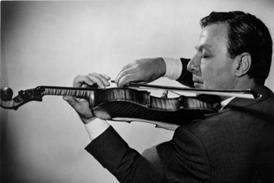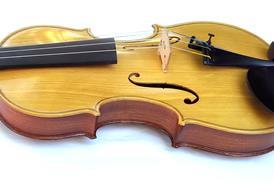- News
- For Subscribers
- Student Hub
- Playing Hub
- Podcast
- Lutherie
- Magazine
- Magazine archive
- Whether you're a player, maker, teacher or enthusiast, you'll find ideas and inspiration from leading artists, teachers and luthiers in our archive which features every issue published since January 2010 - available exclusively to subscribers. View the archive.
- Jobs
- Shop
- Directory
- Contact us
- Subscribe
- Competitions
- Reviews
- Debate
- Artists
- Accessories
Making Matters: Ten out of ten

The great 19th-century French bow makers had to produce a large amount of stock to make a living. Christophe Landon explores how their working methods differed from ours, as he makes ten simultaneous copies of one Peccatte bow
When I was an apprentice violin maker in Mirecourt, I often went fly fishing in the River Madon. The bow maker Roger François Lotte had his house and workshop next to the river, and would come out in his typical Mirecourt blue apron, fists on his hips, and call out, ‘Alors ça mord?’ (‘So, are they biting?’) When I visited his workshop I would always see him working on a dozen sticks at a time. I was not a bow maker then, so I did not pay much attention to it (except to think that we only made one violin or cello at a time, and that was quite enough).
I recently decided to copy a spectacular Dominique Peccatte bow made in Paris. It was branded ‘Peccatte’ on the player side and ‘Paris’ on the other – and notably had the Roman numeral ‘VI’ scratched on the silver. Most likely it would have disappeared under the original lapping, which meant that it was part of a series of at least six bows, probably more; my friend Isaac Salchow tells me he has even seen a ‘XII’ on a Dominique Peccatte. The reason for numbering them in this way was so that Peccatte could later match up the sticks with their corresponding frogs.
Already subscribed? Please sign in
Subscribe to continue reading…
We’re delighted that you are enjoying our website. For a limited period, you can try an online subscription to The Strad completely free of charge.
* Issues and supplements are available as both print and digital editions. Online subscribers will only receive access to the digital versions.




























